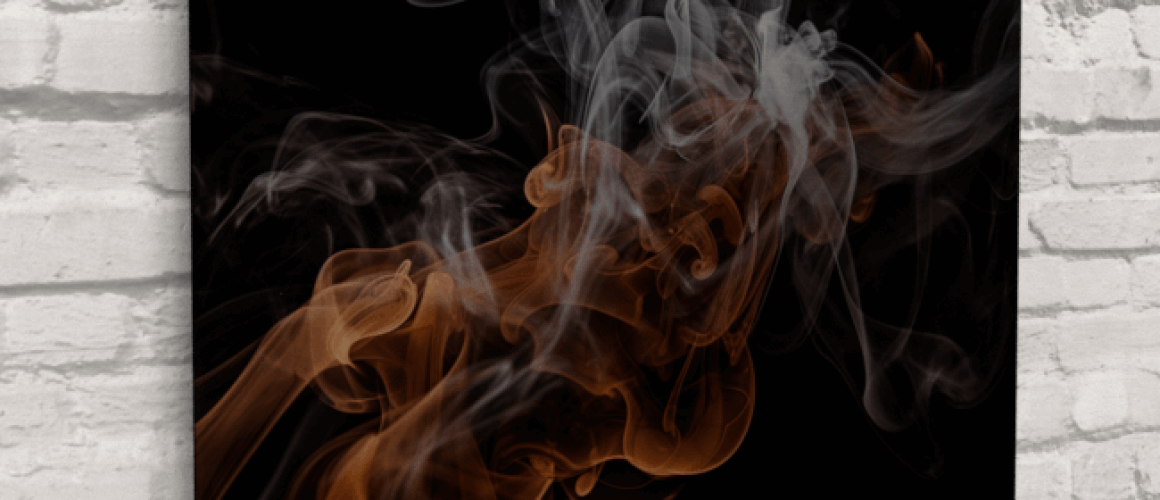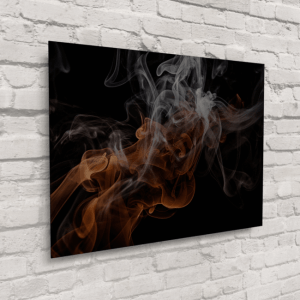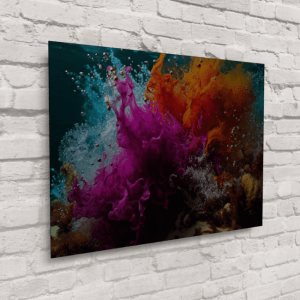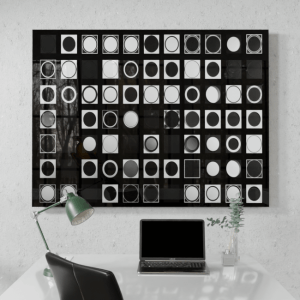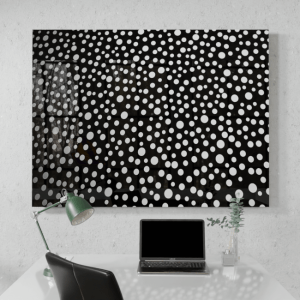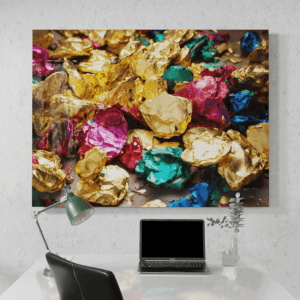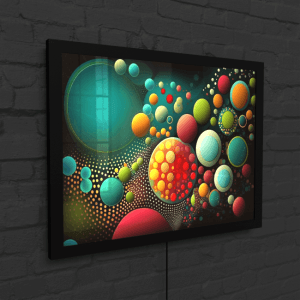Create the best Abstract art prints you can
Engaging in the creation of abstract art prints can be an enjoyable and imaginative endeavor. Abstract art encompasses the use of shapes, colors, and textures to communicate emotions or concepts, without necessarily portraying identifiable objects. Here, we present a set of steps designed to assist you in crafting your own abstract masterpieces or captivating photo prints.
Gather Your Materials:
- Choose your medium: Decide whether you want to work digitally, with traditional painting materials, or with photography.
- Traditional painting: Acrylics, oils, watercolors, or mixed media are common choices.
- Digital art: Use software like Adobe Photoshop or Illustrator, or a tablet and stylus for drawing.
- Photography: Use a camera or smartphone to capture photos.
Find Inspiration:
- Explore existing abstract art prints and photography to gather inspiration.
- Look at colors, shapes, and compositions that resonate with you.
- Think about the emotions or ideas you want to convey through your art.
Experiment with Techniques:
- Traditional painting: Try various brush strokes, layering, and blending techniques.
- Digital art: Experiment with different brushes, opacity settings, and blending modes.
- Photography: Play with camera settings, angles, and lighting to capture abstract compositions.
Create a Composition:
- Decide on the size and format of your abstract art prints
- Plan the layout, considering the balance of colors, shapes, and negative space.
- Sketch or make preliminary edits if needed.
Work with Colors:
- Choose a color palette that fits the mood or theme of your artwork.
- Experiment with different color combinations and see how they interact.
- Consider using complementary or contrasting colors for impact.
Develop Texture and Depth:
- Use different techniques to create texture, such as impasto (thick paint application) or layering.
- Add depth to your artwork by layering colors or elements.
Embrace Abstract Shapes:
- Let your imagination run wild with abstract shapes and forms.
- Avoid the need for realism or representation; focus on the visual impact.
Edit and Refine (if digital):
- In digital art or photography, use software tools to refine your composition.
- Adjust colors, contrast, and details as needed.
Printing Your Artwork:
- Choose high-quality printing materials and services for your art or photo prints.
- Select the appropriate paper or canvas for your medium (e.g., glossy, matte, canvas).
- Consider the size and framing options for your prints.
- Check out more modern mediums such as Acrylic or Metal
Share and Exhibit:
- Share your abstract art prints with others through exhibitions, galleries, or online platforms.
- Seek feedback from fellow artists or art enthusiasts to improve your work.
Keep in mind that the creation of abstract art is a deeply personal and expressive journey. Embrace the freedom to experiment and cultivate your distinct style gradually. As you practice and explore diverse techniques, watch your skills and creativity flourish.
Abstract art encompasses a wide range of styles and approaches, each with its unique characteristics and principles. Here are some different abstract styles:
- Geometric Abstraction: Geometric abstraction focuses on geometric shapes, lines, and forms. Artists in this style often use precise, mathematical compositions to create artworks that emphasize order and symmetry. Artists like Piet Mondrian and Kazimir Malevich are associated with this style.
- Color Field Painting: Color field painting is characterized by large areas of flat, solid color. These areas often extend to the edges of the canvas, creating a sense of color as the primary subject of the artwork. Mark Rothko is a prominent color field painter.
- Abstract Expressionism: Abstract Expressionism is known for its emphasis on emotional expression and gestural brushwork. It can be further divided into two substyles:
- Action Painting: Artists like Jackson Pollock create art by applying paint energetically and spontaneously, often through dripping, pouring, or splattering.
- Gestural Abstraction: Artists like Willem de Kooning and Franz Kline use bold, dynamic brushstrokes to convey emotions and energy.
- Cubism: While Cubism is often associated with representational art, it also has abstract elements. In abstract Cubism, artists break down objects and subjects into geometric shapes, planes, and facets, often depicted from multiple viewpoints.
- Futurism: Futurist abstract art seeks to capture the dynamism and energy of the modern world. It often features geometric shapes and lines that convey motion and speed. Umberto Boccioni is a notable Futurist artist.
- Suprematism: Suprematism, associated with Kazimir Malevich, focuses on simple geometric forms, particularly the square. It aims to convey the purity of artistic feeling and perception without the distraction of representation.
- Hard-edge Painting: Hard-edge painting emphasizes clean, sharply defined lines and shapes with clear, distinct edges. It often employs bold and contrasting colors to create strong visual impact.
- Tachisme: Tachisme, which means “staining” in French, is a style characterized by spontaneous brushwork, drips, and splatters. It often emphasizes the artist’s emotional expression and intuitive mark-making.
- Lyrical Abstraction: Lyrical abstraction combines elements of abstraction with a sense of lyricism and poetic expression. Artists in this style often use softer colors and flowing, organic shapes.
- Biochromy: Biochromy, associated with Carlos Cruz-Diez, explores the interaction of color and light. It often involves creating artworks that change in appearance as viewers move around them, revealing different color combinations.
- Informal Art: Informal art, or Art Informel, is characterized by spontaneous and non-geometric compositions. It often incorporates elements of chance and accident, embracing imperfections and the unexpected.
- Kinetic Art: Kinetic art features moving or dynamic elements that change over time. Artists in this style use various mechanisms and technologies to create artworks that move, creating an ever-changing visual experience.
These are just a few examples of abstract art styles, and there are many more. Abstract art is a diverse and evolving field, with artists continually exploring new forms of expression and pushing the boundaries of creativity.
The size of your abstract art or photo prints can vary widely depending on your artistic vision, intended use, and personal preferences. There is no one-size-fits-all answer, but here are some factors to consider when determining the size:
- Intended Display: Think about where you plan to display your artwork. Is it for a small wall space, a large focal point, or a specific location like a gallery? The size should complement the space.
- Artistic Vision: Consider the details and intricacy of your artwork. Some abstract pieces may work well as smaller, more intimate prints, while others may benefit from being larger to capture the full impact.
- Budget: Larger prints generally cost more to produce, so your budget may influence your size choice. Smaller prints are often more affordable and can be a good starting point for emerging artists.
- Subject Matter: If your abstract artwork or photograph has a lot of fine details or needs to be viewed up close to appreciate, a larger size might be more appropriate.
- Print Medium: Different mediums and materials may work better at certain sizes. For example, canvas prints can often be larger than paper prints without losing quality.
- Visual Impact: Think about the emotional impact you want to achieve. Larger prints can create a more dramatic effect, while smaller ones may offer a more intimate experience.
- Framing and Matting: If you plan to frame your artwork, consider the size and style of frames available. Some standard frame sizes might influence your choice.
- Transportation and Shipping: If you plan to transport or ship your artwork, consider practicalities. Larger prints can be more challenging to move and may incur higher shipping costs.
To help you decide on a size, you can create mock-ups or use design software to visualize how your artwork will look on different wall spaces. You can also seek input from other artists or art professionals to get their perspective on what size would best suit your specific piece.
Ultimately, the size should align with your artistic vision and the impact you want your artwork to have on viewers. Remember that there’s no right or wrong size, so trust your instincts and create the art that feels most meaningful to you.


